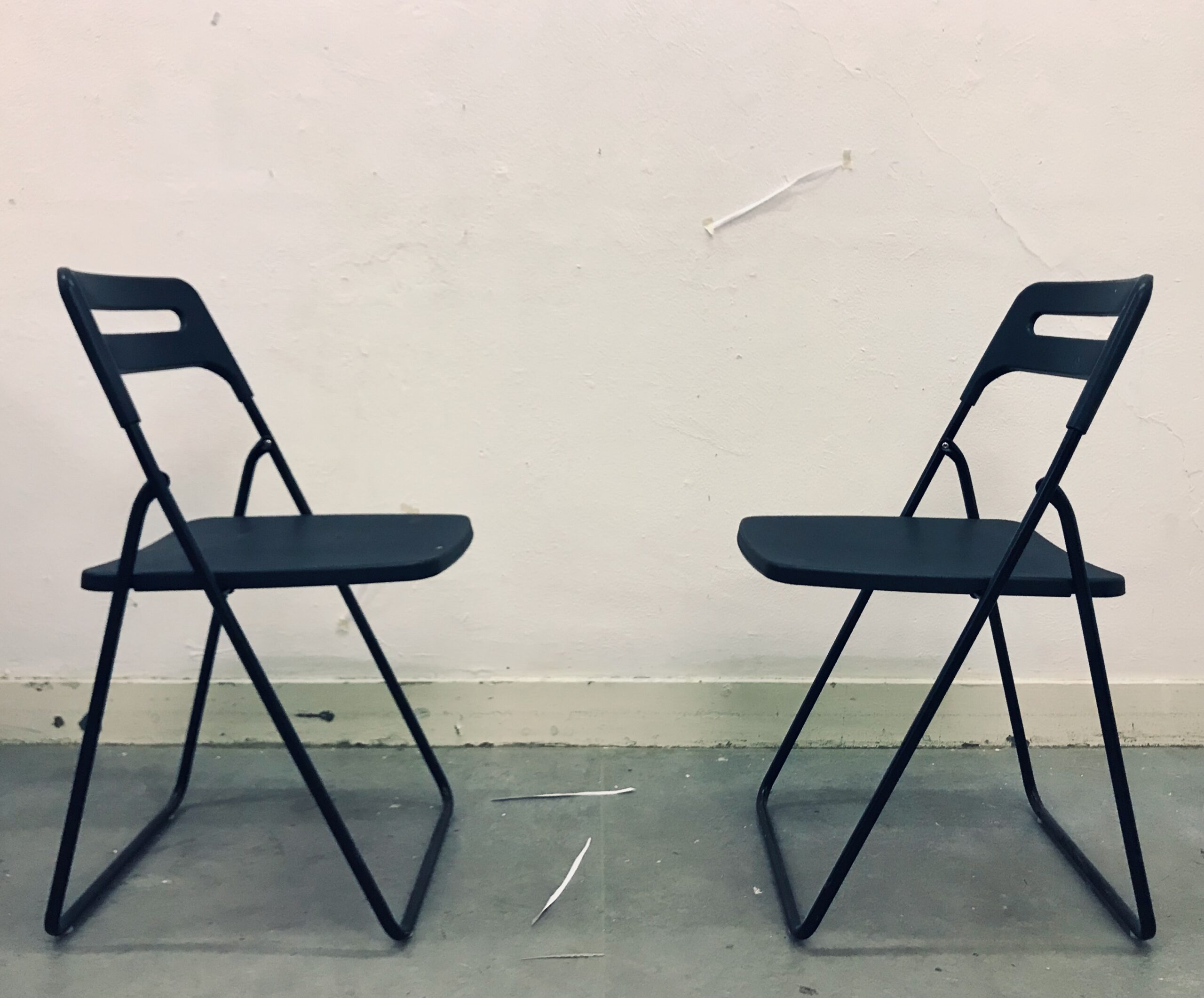
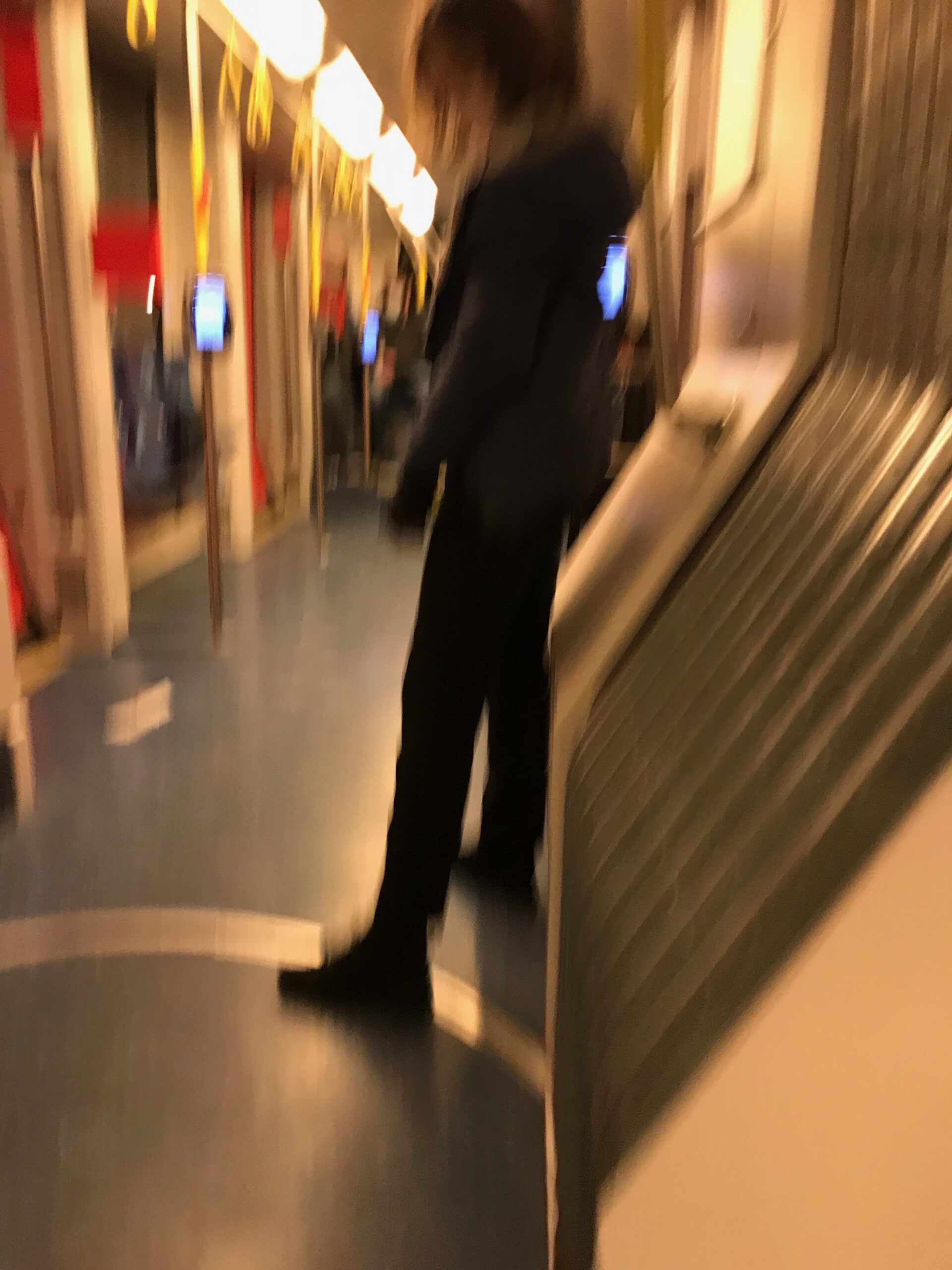
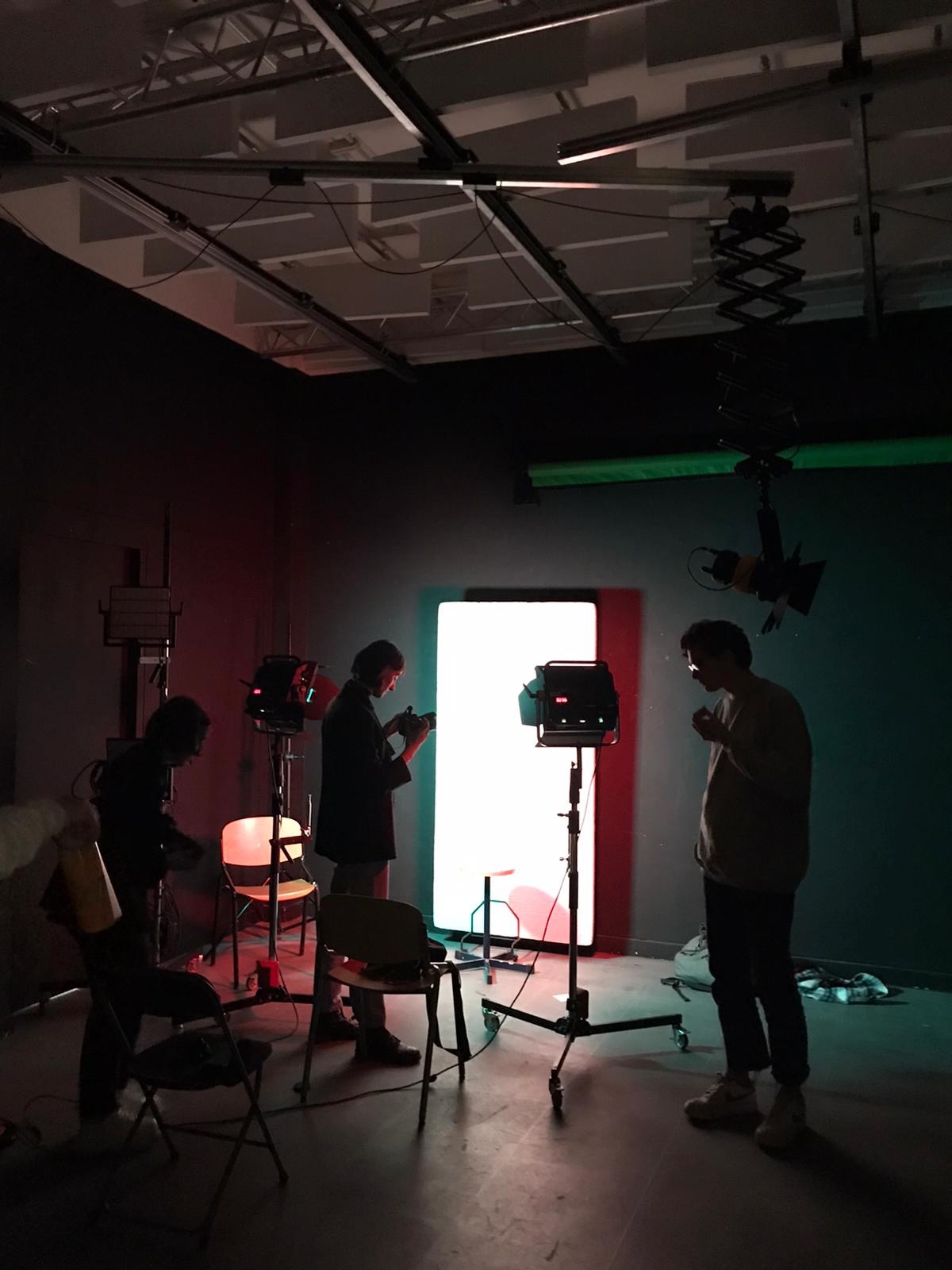

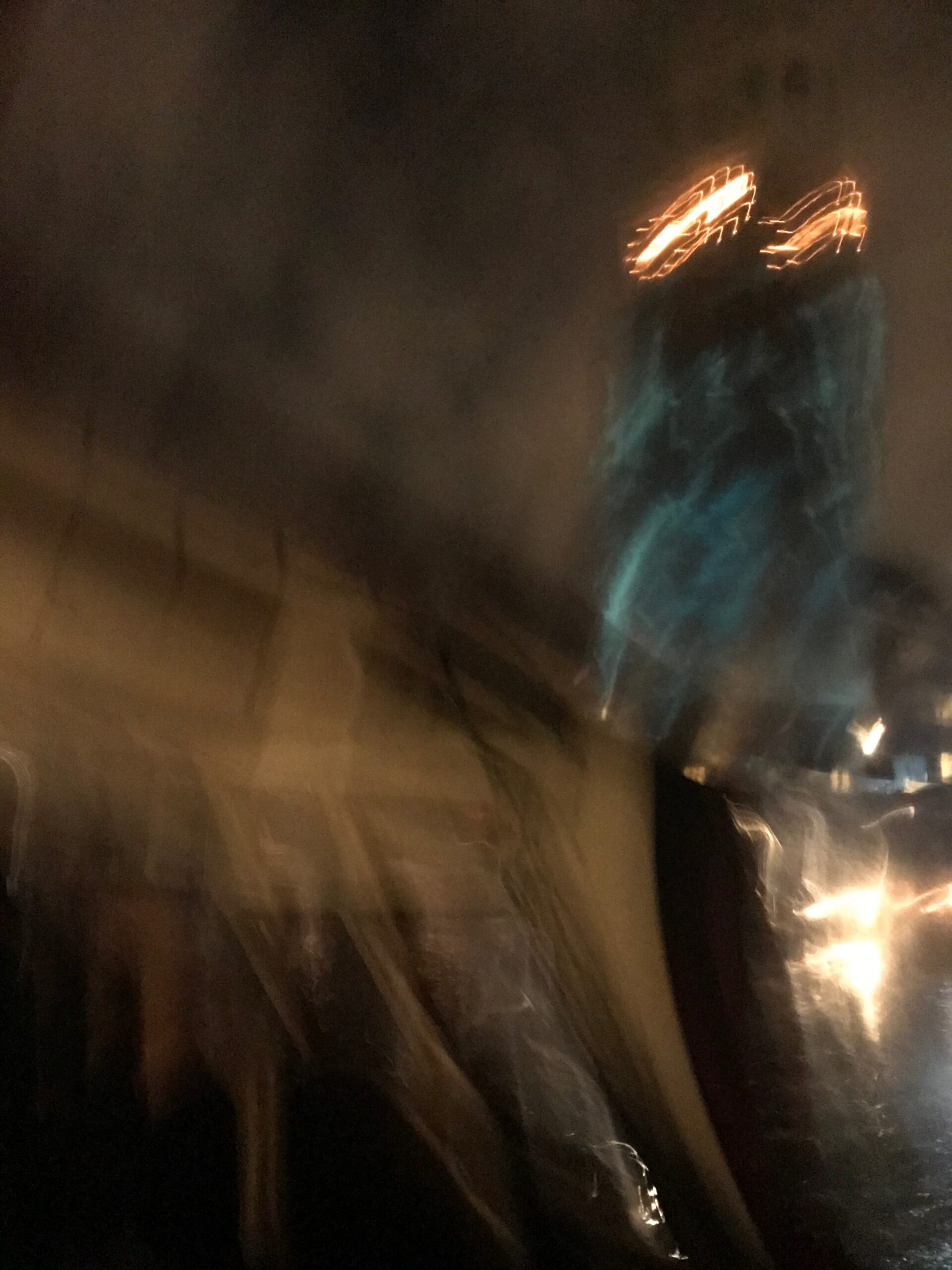
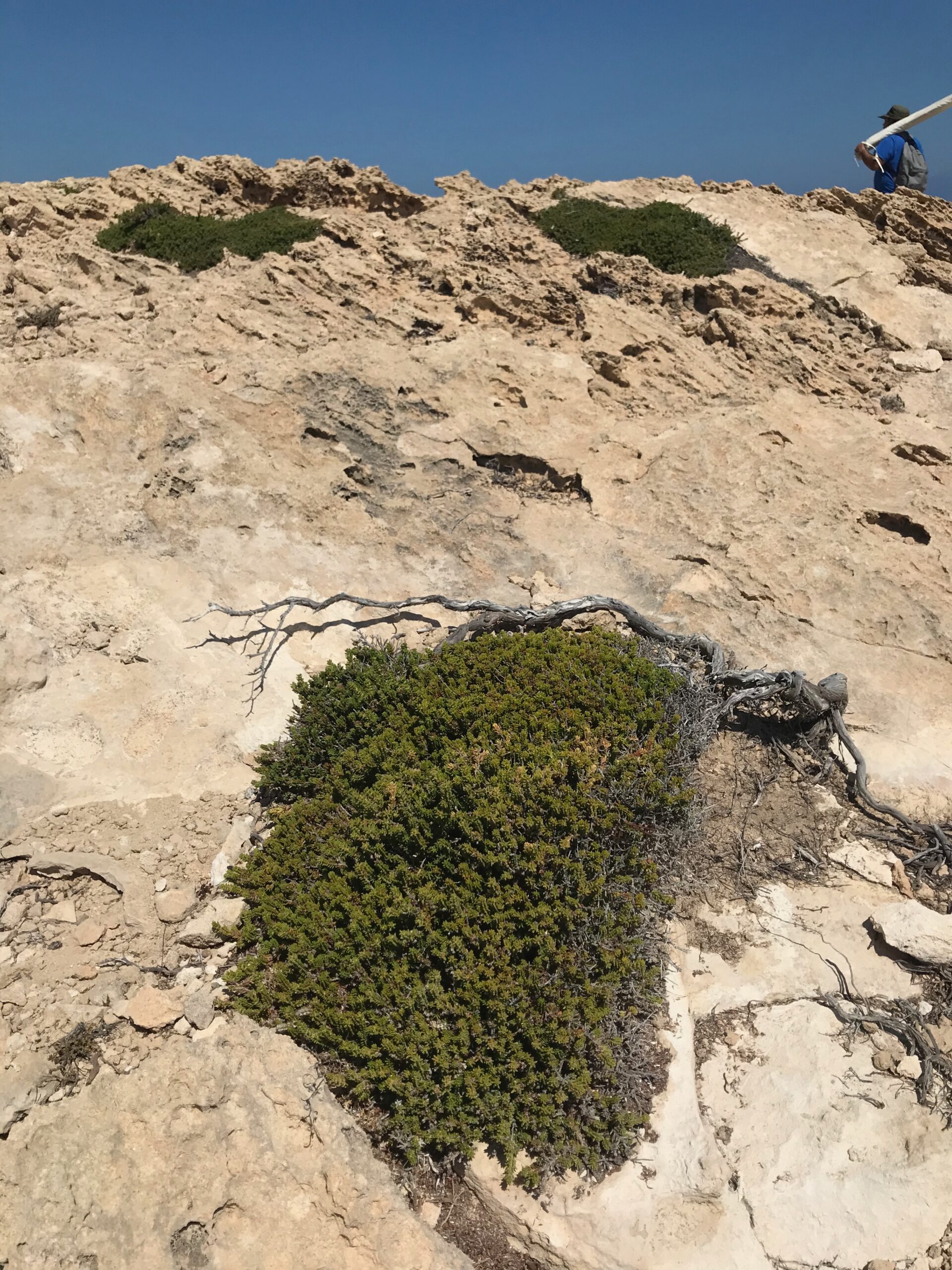
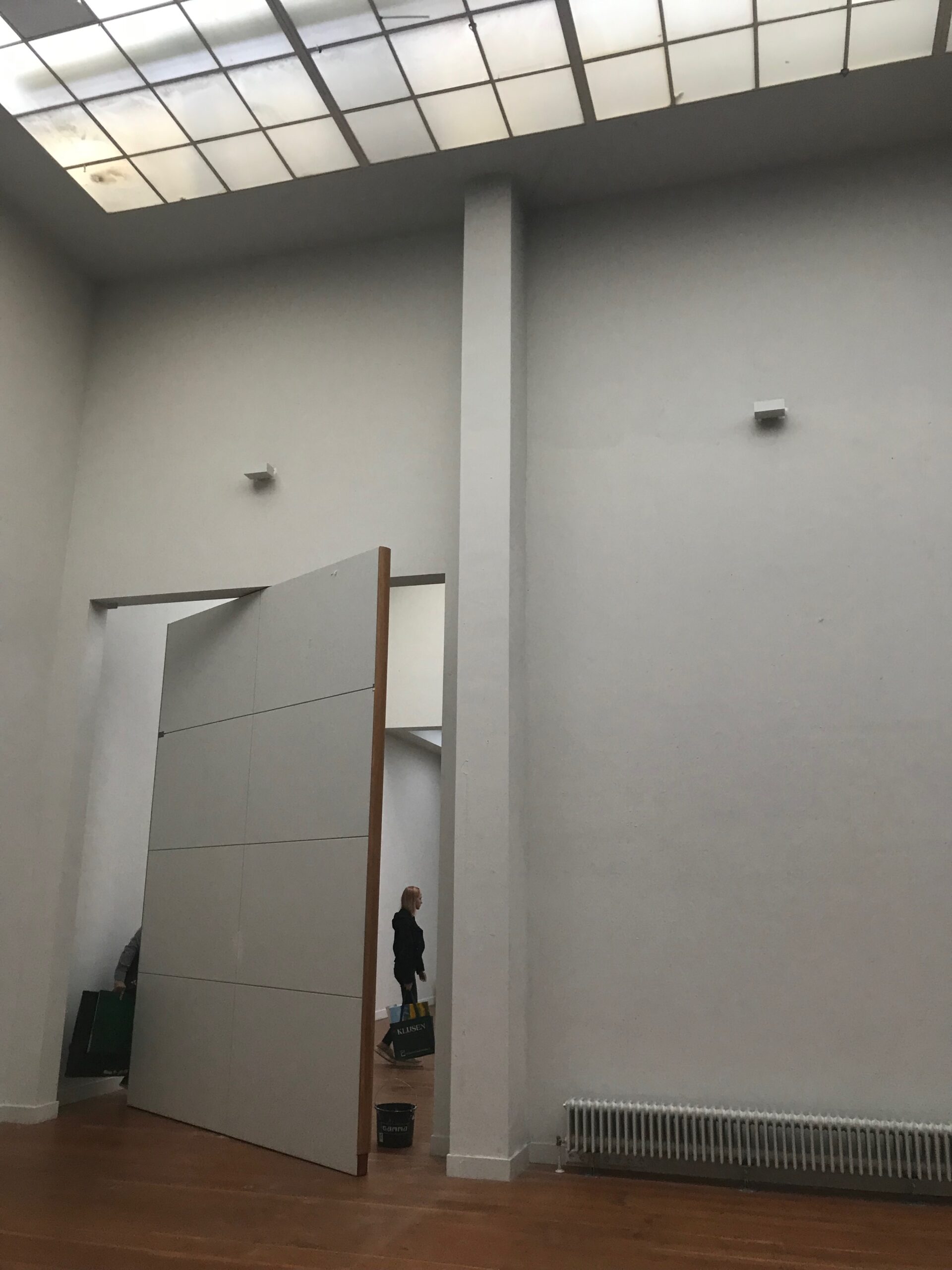
Jules Tethys
Computational Philosophy Aesthetics

BIOGRAPHY
Jules Tethys is an interdisciplinary artist, and theorist working at the intersection of contemporary philosophy, computational aesthetics, and experimental embodiment. With a background in both technical systems and critical theory, their practice explores the post-organic body as a site of disruption, resistance, and invention. Jules Tethys is currently based between Berlin and Seoul.
ARTIST STATEMENT
Organs—a concept first initiated by Antonin Artaud and radically expanded by Deleuze and Guattari into a plane of intensities, a site of resistance, and a politics of becoming. I do not treat this notion as allegory but as operative system: a foundational architecture of being that I approach through advanced media systems, somatic computation, and conceptual engineering. The work confronts the historically conditioned anatomy of the body—social, biological, machinic—and sets out to dissolve its hegemonic arrangements. By disentangling the body from its programmed utility, its reactive circuits, and its disciplinary anatomies, I aim to generate a space where new configurations of subjectivity, presence, and non-linear embodiment can emerge.
This is not a symbolic destruction, but a precise and technical reassembly of the body as an expanded site of epistemological rupture. Through synthetic ecologies, real-time sensor feedback, and neural architectures, I construct partial and unstable BwOs that act as prototypes for post-organic existence. Each piece is a functional speculation—an anti-cartography that resists anatomical totality and instrumental reason. My practice operates at the convergence of theoretical philosophy, computational aesthetics, and somatic de-stratification. It is not concerned with representation but with invention—of systems, bodies, and conditions through which new modes of being may become thinkable. As a leading voice in the global discourse on art and technical ontology, my work insists on the necessity of reengineering embodiment as a critical strategy against the regimes of control shaping life in the 21st century..
Chloris Daphnea
Post-Organic Aesthetics & Interaction

BIOGRAPHY
Chloris Daphnea is a contemporary artist and theorist whose practice explores the intersection of tactile interaction, technology, and post-human sensory experiences. Their work delves into how digital systems, AI, and physical touch converge to redefine human perception. Through experimental interfaces and multi-sensory artworks, Daphnea questions the traditional boundaries between human and machine, drawing upon the theories of Donna Haraway’s *Cyborg Manifesto* and contemporary discourse on Post-Internet Art. Daphnea’s practice is rooted in creating intimate, participatory art experiences that challenge the distinctions between the organic and the technological, offering new insights into the future of human embodiment in an AI-driven world.
ARTIST STATEMENT
My practice arises from a desire to examine the shifting boundaries of the self in an era where bodies and machines are increasingly entangled. In my work, touch becomes a way to bridge this divide, a tangible interaction that emphasizes both the materiality of the body and the immateriality of digital technologies. I approach the notion of *cyborg* as a non-binary zone, where touch interfaces allow us to question how the physicality of our senses aligns—or fails to align—with the technologies we have created. Inspired by Donna Haraway’s *Cyborg Manifesto*, my art seeks to disassemble outdated categories of what is human, what is machine, and how they coalesce in a post-organic future.
Through my engagement with Post-Internet Art, I explore how digital materiality—the very essence of data, algorithms, and machine learning—shapes our perceptions of reality. My tactile works not only invite interaction with physical surfaces but challenge the viewer to sense beyond the screen, where touch operates as a medium for reconciling the digital with the real. The interfaces I design facilitate encounters with machines that feel deeply intimate, altering perceptions of human identity and experience in the age of AI. Each installation is an experiment in embodied interaction, where the cyborg is not an abstraction, but a lived reality that shifts our relation to both technology and ourselves.
Simon Liu
Temporal Friction Aesthetics

BIOGRAPHY
Liu Simon is a media artist working with signal degradation, obsolete protocols, and ambient systems. His practice explores the aesthetics of minimal information and the poetics of failure. Trained in sonic and visual abstraction, Simon’s work engages with John Cage’s compositional negations and early net.art’s lo-fi materialities. His re-enactment of Snow’s Wavelength in ASCII is part of an ongoing interest in erasure, machine legibility, and the aesthetics of post-medium translation. Simon positions silence, pixel-loss, and resolution drop as active forces in temporal and perceptual construction. His work often seeks to transcend the boundaries of traditional narrative forms, engaging viewers in direct, temporal encounters with the medium itself.
ARTIST STATEMENT
Through my work, I aim to peel back the layers of film’s materiality and draw attention to the subtle ways in which perception, duration, and the unspoken elements of cinema influence how we understand art.
Structural Film and the Aesthetics of Duration
Between structural film, minimalism, avant-garde sound art, and poststructuralist philosophy lies a terrain where meaning dissolves, time expands, and narrative collapses into presence. Artists such as Michael Snow and John Cage develop artistic practices that do not just resist interpretation; they strategically dismantle the mechanisms of narrative, representation, and expression. This deconstruction is not nihilistic but rather liberating. This disassembly aligns with the principles of poststructuralist thought, particularly as described in James Williams’ Understanding Poststructuralism (Acumen, 2005), which emphasises the contingency, deferral, and multiplicity of meaning in postmodern aesthetic practices.
Michael Snow’s Wavelength (1967) is emblematic of structural film’s emphasis on temporal experience and visual form over traditional storytelling. The film’s continuous 45-minute zoom across a loft is not designed to reveal narrative progression but to manifest time spatially. Minor events—such as the brief appearance of figures or sounds—serve not as story elements but as interruptions within a formal process. As P. Adams Sitney outlines in Visionary Film: The American Avant-Garde, 1943–2000, structural film is characterised by “shape” rather than “story,” foregrounding the duration and perceptual structure of the cinematic experience itself.
The Time-Image
Gilles Deleuze, in his two-volume cinematic philosophy—Cinema 1: The Movement-Image (1983) and Cinema 2: The Time-Image (1985)—distinguishes between classical cinema, which organises images according to movement and causality, and modern cinema, which instead foregrounds duration, fragmentation, and perceptual gaps. Deleuze describes the shift from sensory-motor schema to a cinema of pure time, where the image is no longer subordinated to narrative logic but instead reveals time directly. Wavelength exemplifies the time-image in this Deleuzian framework. The slow, meditative zoom, devoid of a traditional protagonist or climax, liberates the film from narrative coherence. It becomes a temporal contemplation, what Deleuze calls a “crystal-image” of time. In this sense, Snow’s work not only exemplifies the time-image but radicalises it by removing nearly all conventional cinematic functions. Time is not measured but experienced; it is stretched, suspended, and intensified.
Cage, Silence, the Expansion of Listening and the Lecture on Nothing
John Cage’s 4’33” (1952) constitutes a foundational gesture in minimalist and conceptual sound art, offering a profound meditation on the conditions of listening. Composed of three movements of silence, the piece famously asks the performer to play nothing, allowing ambient and environmental sounds to fill the space. This intervention was not simply an act of negation but a philosophical shift, inviting the audience to hear beyond intentional sound. Cage was influenced by Zen Buddhist ideas of emptiness and by Marcel Duchamp’s notion of the readymade. In Silence: Lectures and Writings (1961), Cage states, “I have nothing to say and I am saying it and that is poetry.” This deliberate removal of musical content enables a new attentiveness. The boundaries between composition and environment dissolve, aligning listening with being. As musicologist Kyle Gann notes in No Such Thing as Silence: John Cage’s 4’33” (2010), the piece reframes silence not as a void but as a site of profound sonic presence.
Further, John Cage’s Lecture on Nothing (1949) is a seminal text that defies traditional boundaries between music, poetry,, and philosophy. Composed using a formal structure inspired by musical time brackets, the lecture emphasizes the value of silence, repetition, and the dissolution of ego. Cage famously declares, “I have nothing to say and I am saying it,” foregrounding an aesthetic where meaning arises not from content, but from form, timing, and attentiveness. The lecture challenges the audience to listen differently—to embrace indeterminacy and presence, and to reconsider the role of the artist not as an expresser of personal emotion, but as a facilitator of experience. In doing so, Cage opens a space for thought that aligns with Zen principles and anticipates post-structuralist ideas about authorship and meaning.
The Logic of Différance
Jacques Derrida’s concept of différance, elaborated in his essay “Différance” (1968) and later works such as Margins of Philosophy (1972), introduces a mode of thinking in which meaning is never fully present but is always deferred through a system of relational difference. Meaning arises not from a fixed correspondence between signifier and signified, but from an endless interplay of signs. Derrida writes, “The signified concept is never present in and of itself,” underscoring that the act of signification is an infinite deferral. This philosophical insight resonates with the aesthetics of Cage and Snow. In their work, meaning is not imposed by the artist nor consumed by the viewer or listener; rather, it emerges contingently through attention and context. The absence of narrative or musical content parallels Derrida’s idea that presence is always haunted by absence—that what we understand is always shaped by what is not said, not shown, or not played. In this sense, Cage’s silence and Snow’s visual duration are performative enactments of différance, making the absence of content the very site of interpretative richness.
Poststructuralism and the Aesthetics of Absence
Poststructuralism, as articulated by thinkers like Derrida, Foucault, Deleuze, Lyotard, and Nancy, represents a radical rethinking of meaning, authorship, and interpretation. Rather than seeking underlying structures or universal truths, poststructuralism emphasizes instability, rupture, and the indeterminacy of textual and aesthetic practices. Jean-François Lyotard, in The Postmodern Condition (1979), critiques the legitimizing power of grand narratives and highlights the fragmentation and performativity of knowledge. Art within this intellectual framework moves away from representation toward process and performative presence. Jean-Luc Nancy, in The Inoperative Community (1986), articulates a model of being-together not grounded in shared identity but in shared exposure—an idea that finds analogical expression in minimalist and structuralist aesthetics. Works such as Wavelength and 4’33” do not prescribe a singular interpretation but instead provide conditions for attentiveness, for the emergence of difference. Structural film and minimalist sound art thus do not just illustrate poststructuralist thought—they participate in it. They enact a deconstruction of narrative, mastery, and intention. Their silence, slowness, and minimalism are not absences in the pejorative sense, but acts of generative withholding. These are works that ask not what meaning is, but how it occurs, and under what conditions it becomes possible.
Beyond Minimalism: Absence and Difference
While both minimalism and poststructuralist-inspired aesthetics often appear to trade in reduction, their underlying logics differ fundamentally. Minimalism, particularly in its mid-20th-century American forms—exemplified by artists such as Donald Judd, Steve Reich, or La Monte Young—sought to distill art to its most essential elements. It often emphasised objecthood, repetition, and a kind of empirical immediacy. The minimalist artwork tends to foreground material presence and a stable perceptual encounter. By contrast, the aesthetics of absence found in Cage’s 4’33” or Snow’s Wavelength are not merely minimal; they are ontologically unstable. Where minimalism reduces, poststructuralist-inflected work defers. These works do not present a purified form, but a differential field—a space in which perception and meaning are constantly dislocated. As Rosalind Krauss notes in her writings on postmodern aesthetics, the shift is from presence to trace, from object to operation (The Originality of the Avant-Garde and Other Modernist Myths, 1985). In this sense, the comparison reveals more than shared surface features. It reveals a divergence of philosophical commitment: minimalism seeks clarity through restraint; structural film and conceptual sound art, aligned with poststructuralism, seek indeterminacy through withdrawal. This difference is not one of style but of stance—a distinct orientation toward what art is, what it does, and how it relates to its audience.“There is nothing to see. There is everything to perceive.” (John Cage)
Jacques Derrida’s concept of différance provides a theoretical lens through which to understand these artistic gestures. Différance is not a concept but a movement—a continual deferral of meaning. Snow and Cage do not represent this idea; they instantiate it. Their works do not seek to communicate stable meanings, but to open spaces where meaning shifts. This aesthetic of absence is not one of negation but of relation. It insists on the viewer’s or listener’s presence as co-constitutive of the work. It refuses mastery and invites responsiveness. It is, ultimately, an ethics as much as an aesthetics—a call to encounter what is not given, and to be within the temporal conditions that make meaning both possible and provisional.
Machines to Crystallize Time – Lazzarato
In Machines to Crystallize Time, Maurizio Lazzarato draws on Henri Bergson’s philosophy to examine how contemporary technologies—particularly video and digital media—reshape our experience of time, perception, and subjectivity. Bergson’s core concept of “duration” (a lived, continuous, and creative time) challenges mechanical, clock-based understandings. Lazzarato argues that modern technologies do not merely capture or represent time—they crystallize it, creating intervals, delays, and flows that mirror how memory and consciousness function. Lazzarato distinguishes between habit-memory (automatic, bodily actions) and true memory (conscious, creative recollection), showing how video technologies imitate both. These machines extend the mind’s ability to store, manipulate, and project time, thus influencing how we perceive and act in the world. The video camera becomes a “body” within the flow of images, introducing pauses and decisions, much like the human brain does. Lazzarato redefines subjectivity as a fold within time—not a fixed identity, but an ongoing interaction between memory, perception, and technological mediation. Technologies can either enhance our capacity to act (by expanding memory and imagination) or limit it (by reinforcing automatic, habitual behaviors). By linking Bergson’s non-linear ontology of time with the functioning of media systems, Lazzarato proposes that digital and visual media are not neutral tools but active participants in the construction of social time and human experience. This insight opens the way toward a new politics of the virtual, where the power to affect and be affected—our very capacity to feel, think, and act—is at stake.
Space of Dwelling – Sicinski
Michael Sicinski’s “Wavelength and the Space of Dwelling” transforms our understanding of Snow’s Wavelength from a landmark in time-based cinema to a foundational study of space as filmic subject. Through Heidegger’s existential notion of dwelling and Lefebvre’s concept of socially produced space, Sicinski demonstrates how the film’s continuous zoom, material focus, and narrative indeterminacy collectively enact a profound spatial engagement—inviting viewers not merely to watch but to dwell within the cinematic environment. This reconceptualization opens new ways for both theorists and practitioners to explore the interplay between human consciousness and the spaces we inhabit. In his essay “Wavelength and the Space of Dwelling,” Michael Sicinski offers a thought-provoking reinterpretation of Michael Snow’s landmark 1967 film Wavelength. Moving beyond the customary emphasis on temporal experimentation, Sicinski reframes the film as a profound exploration of spatiality—inviting viewers to inhabit, reflect upon, and engage with cinematic space as an active, lived environment. Drawing on the philosophies of Martin Heidegger and Henri Lefebvre, he demonstrates how Wavelength foregrounds materiality, challenges narrative conventions, and ultimately reshapes our understanding of the relationship between human subjectivity and the spaces we occupy. Where many readings of Wavelength focus on its forty-five minute slow zoom as a meditation on cinematic time, Sicinski contends that this interpretation is incomplete. The film’s continuous camera movement is less a chronometer than an invitation to dwell within its material setting. By shifting attention from duration to the qualities of space itself, Sicinski encourages us to perceive the loft not as a mere backdrop but as the film’s primary subject. Sicinski anchors his spatial reading in two key philosophical frameworks:
Heidegger’s Existential Dwelling Heidegger proposes that true “dwelling” entails an intimate, existential engagement with one’s environment. In Wavelength, the viewer becomes a dweller in the loft, invited to lean into its shifting textures of light and sound rather than staying detached as an observer.
Lefebvre’s Social Production of Space Lefebvre argues that space acquires meaning through social interaction and human practice. Sicinski shows how Snow’s film constructs space as a dynamic participant—its walls, floor, and objects co-constituting the viewer’s experience rather than serving passively as scenery.
The Zoom as an Ontological Bridge
The zoom is then seen as an Ontological Bridge, where central to Sicinski’s argument is the notion that the film’s characteristic zoom functions as an “optical bridge.” Rather than merely revealing detail, the zoom weaves together the loft’s disparate zones, prompting viewers to contemplate their positional relationship to the filmic environment. This technique transforms camera movement into a philosophical tool, collapsing distance between spectator and space.
Spotlight on Materiality
By drawing our attention to shifting light patterns, textured surfaces, and the physical contours of the loft, Wavelengthunderscores the materiality of space. Sicinski emphasizes that Snow’s film refuses to treat space as an inert container for action; instead, it posits space itself as an active presence that shapes—and is shaped by—the viewer’s perception.
Disrupting Narrative and Subjectivity
Wavelength subverts conventional storytelling by offering no central character, dialogue, or plot. Sicinski argues that this absence is deliberate: it decouples the cinematic experience from narrative expectation and disengages the viewer from empathetic identification. In doing so, the film aligns with Heideggerian and Lefebvrian insights, recentering the human subject within the co-constitutive field of space. By reorienting our focus toward spatial experience, Sicinski’s analysis challenges filmmakers and audiences alike to reconsider the primacy of narrative in cinema. It suggests that the exploration of material space can yield equally rich aesthetic and philosophical insights, prompting new modes of engagement that extend beyond the screen to encompass architecture, environment, and lived experience.
Conclusions: “Wavelength” as a Diagrammatic Temporality: Aesthetic Time-Code for Posthuman Subjectivity
Michael Snow’s Wavelength can be ninterpreted as a diagrammatic temporal artifact—not just a structural film, but a code-space of durational becoming, akin to a time-based interface for posthuman subjectivity. Theoretical Synthesis: Building from Deleuze and Guattari’s idea of the diagram (from A Thousand Plateaus) and Félix Guattari’s machinic unconscious, Snow’s work becomes more than a film—it is a nonhuman semiotic machine that encodes a temporal experience beyond anthropocentric perception. The slow 45-minute zoom is not simply an image operation but a temporal diagram: it stretches time to unveil the inhuman rhythms of attention, gesturing toward a non-subjective viewer—a machine, an AI, or a planetary rhythm. Cage’s Lecture on Nothing, with its disciplined emptiness and form-bound silence, intersects here as a sonic parallel: both works formalize absence as structure, not content. Snow’s Wavelength is a “lecture on seeing nothing,” yet it generates ontological resonance through the sheer passage of undifferentiated duration. Heidegger’s Gelassenheit (releasement) and Bergson’s durée réelle offer philosophical scaffolding for this idea—Snow’s film isn’t about narrative or image; it performs temporality as material, experiential, and ungraspable. The viewer doesn’t watch the film; they are reprogrammed by its slowness, experiencing a retraining of perceptual capacities.
Implication: In an era where time is fractured by digital interfaces, Wavelength can be seen as a counter-temporal protocol, a kind of analog time virus. It reorients the human subject away from productive time (Lefebvre’s rhythms of the everyday, Lazzarato’s time of debt) toward a machinic contemplation—a rehearsal for inhabiting alien scales of time, whether geologic, cosmic, or computational. Thus, Snow’s work stands as a proto-interface for posthuman time-awareness, positioning cinema as not only a representational device but as a philosophical tool for time-conditioning—an apparatus that radicalizes perceptionthrough ontological slowness.
Geo Flouris
Noötecture Pattern Aesthetics

BIOGRAPHY
Geo Flouris is a multidisciplinary artist, whose practice bridges visual art, technology, psychology, and human connection. Geo is currently based between The Hague and Heraklion. With a background spanning fine arts, psychotherapy, business and engineering, Geo explores the deep human need to connect and the complexities of interaction. His work seeks to reveal the invisible ties that bind individuals and communities, using diverse mediums such as live performance, making, thought experimentation and unstable media.
ARTIST STATEMENT
My practice is rooted in the exploration of connection—both personal and collective. I seek to unravel the psychological layers that shape how we relate to each other, bridging the visible and invisible through art. I am particularly interested in the intersection of emotion, perception, and the dynamics of shared experience in a technological era. The human body, as both a physical and metaphorical space, serves as the central point of my work. My work explores how we receive, perceive, and respond to others, examining the tension between presence and absence in human interactions.
Through collaboration and fusion, I delve into the fusion of individuals into a collective being, breaking down boundaries and exploring the intersection between the self and others. The performative aspects of my work challenge both the artist and viewer to reflect on the psychological depths of human bonding and the emotional complexities we face in an interconnected world. Each piece is a living exploration of unity, conflict, and the visceral power of shared existence.
Solene Marrell
Language Topology Aesthetics

Publications
Marrell, S. (2025). The Architecture of Ignorance: Structured Unknowing as a Generative Condition (Version 1). Zenodo. https://doi.org/10.5281/zenodo.17334509BIOGRAPHY
Solene Marrell is an interdisciplinary visual artist whose practice fuses elements of digital art, sound, and environmental storytelling. With an academic background spanning economics, software engineering, psychology, and philosophy, Marrell’s work bridges analytical and poetic modes of thought to investigate the hidden dynamics of human experience. Her projects often translate complex systems—cognitive, ecological, and technological—into abstract visual and interactive forms that question how knowledge and perception are constructed. Currently based between Amsterdam and Tokyo, she uses technology as both medium and metaphor, exploring the intersection of personal memory, collective identity, and ecological transformation. Integrating her experience as a mother and systems thinker, Marrell approaches creation as a recursive process of care, attention, and critical inquiry. Her work has been exhibited internationally in galleries and festivals, positioning her at the frontier between artistic research and computational aesthetics..
STATEMENT
My work investigates the invisible architectures that govern perception, emotion, and collective behavior. Rooted in both artistic intuition and analytical inquiry, it draws from psychology, philosophy, and systems thinking to explore how unseen forces—emotional, political, technological, or ecological—shape our lived realities. Through the fusion of digital technology and organic form, I aim to reveal the subtle interplay between presence and absence, control and chaos, the human and the artificial. I approach invisibility not only as an aesthetic condition but as an epistemic one—an active process within systems of knowledge, power, and cognition. By constructing environments that blur the boundaries between perception, data, and memory, my work challenges dominant narratives and opens spaces for speculative reimagining. Each piece is an experiment in seeing: how perception itself can be reframed, decoded, or resisted through interaction. Using tools from generative art, algorithmic design, and responsive systems, I build artworks that adapt to human and environmental inputs—systems that think, feel, and misinterpret, much like we do. In this way, my practice becomes both a meditation on consciousness and a critique of technological certainty. It invites viewers to confront the structured ignorance embedded in our digital and social ecologies and to reconsider their own participation in the invisible networks that define contemporary existence.
James Porrit
Segregative Sensory Systems Aesthatics (SSSE)

BIOGRAPHY
James Porrit is a contemporary artist working at the intersection of sensory perception, experimental sound design, and phenomenological philosophy. His practice explores how different sensory modalities, particularly smell and sound, inform and shape the human experience of the world. With a foundation in sonic art and sensory ecology, Porrits work often delves into the nuanced ways in which our senses categorize and interpret environmental stimuli. He is currently based in London and has exhibited his work internationally, engaging audiences in sensory immersion and interactivity.
ARTIST STATEMENT
My work seeks to explore the ways in which sensory systems—particularly the olfactory and auditory senses—construct categories of perception. Drawing on the philosophy of Deleuze and Guattari, I approach the nose as a complex system of intensities, capable of producing various registers of meaning beyond simple classification. I am not interested in reducing the olfactory to a mere tool of identification but instead in exploring how different “smells” can reveal deeper layers of cultural, psychological, and social categorization.
In this project, I experiment with categorizing smells as ‘sonic’, ‘phantasmatic’, ‘technological’, ’emotional’, and ‘natural’—each of which reflects a different mode of categorization in relation to the theories of Michel Foucault and Deleuze’s concept of the “rhizome.” The project connects these categories with emotional and cognitive responses, pushing the boundaries of how we think about not only smell but also the entire sensory experience. This reimagining of the categorization process breaks free from traditional boundaries of perception, challenging our understanding of how sensory input shapes our experience of reality.
The idea of ‘nose categorization’ reimagines the nose not only as a biological organ but as a political site of encoding and decoding—much like the ways that sound can be understood through Deleuzes concepts of difference and repetition. Using both real and synthesized scent patterns, the work generates a visceral experience for the participant, asking them to engage with smells that speak to their own personal and collective histories. The categorization of smells becomes a tool for social analysis, encouraging reflection on how society constructs sensory norms and how we, as individuals, relate to those norms.
Ultimately, my intention is to move away from the categorization of smell as a static process and into the realm of a dynamic, ever-evolving experience of the senses. This project is not about finding the ‘right’ way to categorize, but about understanding how our sensory organs, our emotional states, and our socio-political systems interact to generate a world of fluctuating intensities and shifting boundaries. The work opens up the possibility of new configurations of perception—ones that are not bound by pre-existing notions of sense and sensibility.
Marcos Novak
Post Desire Glitch Aesthetics

BIOGRAPHY
Marcos Novak is a multimedia artist and theorist whose work spans virtual environments, net art, and interactive design. With a background in architecture and computational design, Novak’s practice engages the intersections of digital culture and post-capitalist critique. His work seeks to dismantle traditional models of time, space, and value in the age of technological acceleration. Novaks approach is informed by the cultural and philosophical discourse of post-capitalism, drawing from thinkers like Mark Fisher.
ARTIST STATEMENT
In a world increasingly defined by temporal glitches and fractured realities, my work probes the intersection of technology, capitalism, and desire. Drawing from Mark Fisher’s critique of post-capitalism, I seek to explore the ways in which contemporary digital environments both collapse and disrupt traditional models of productivity, labor, and identity. Fisher’s notion of “post-capitalist desire” serves as a framework for my practice—what happens when desire is no longer subsumed by capitalist structures but instead becomes a tool for generating alternative spaces, experiences, and interactions?
Through the creation of temporal glitches—fractures in the digital and analog worlds—I engage with the unstable, unpredictable forces of post-capitalism. My works create environments that act as speculative platforms for imagining futures beyond the economic and social structures of the present. These digital artifacts reflect on the concept of time as a malleable force, influenced by our economic systems and, in turn, shaping our desires and experiences. It is in the collapse of temporal norms that new potentials for the imagination emerge—where post-capitalist desires can be imagined and embodied in unexpected ways.